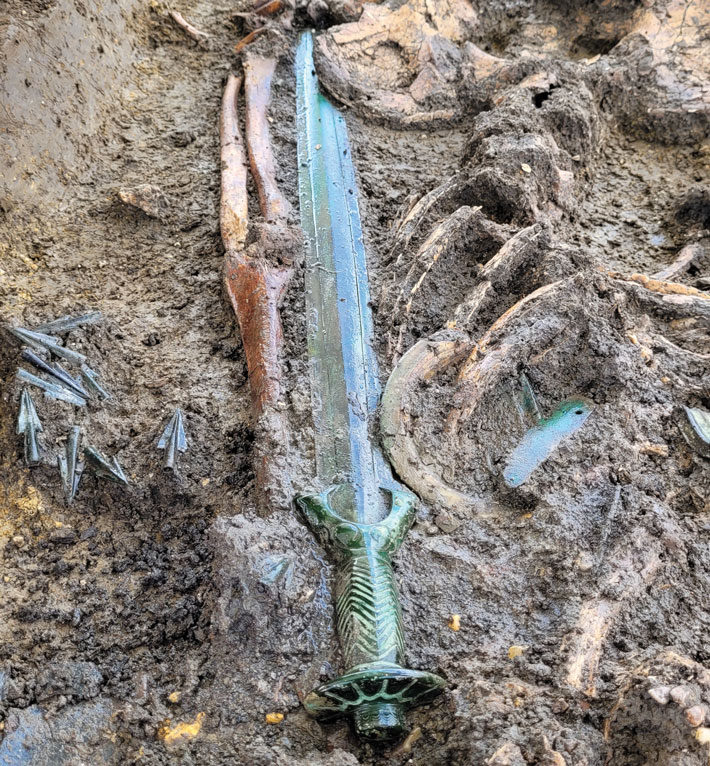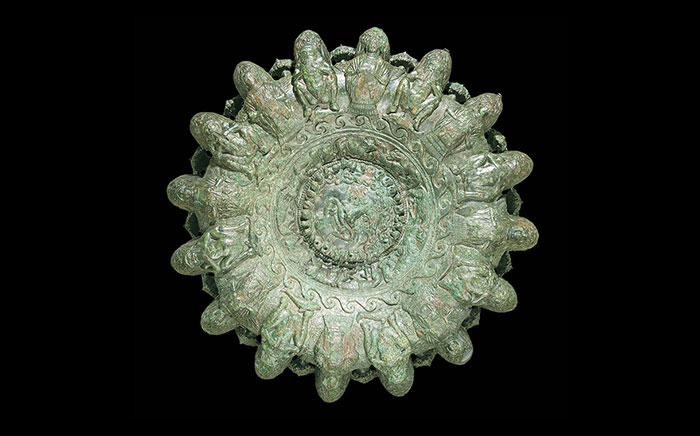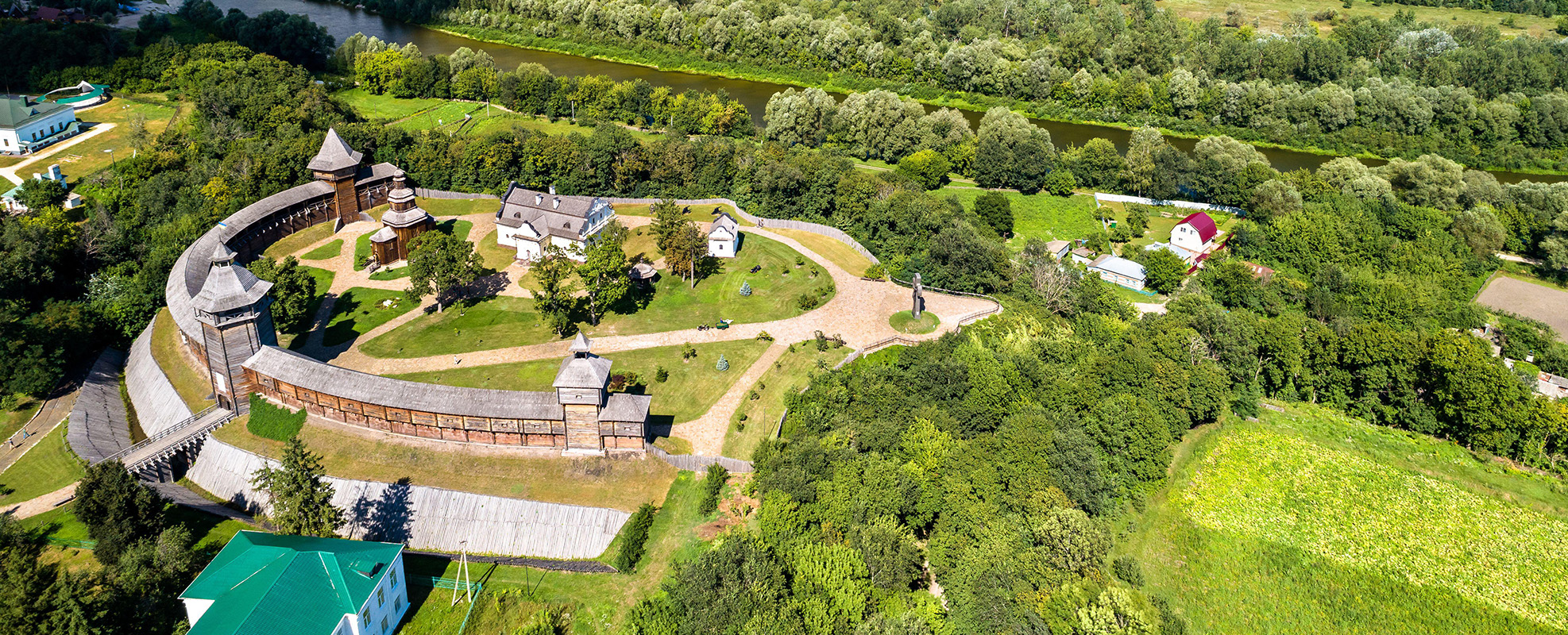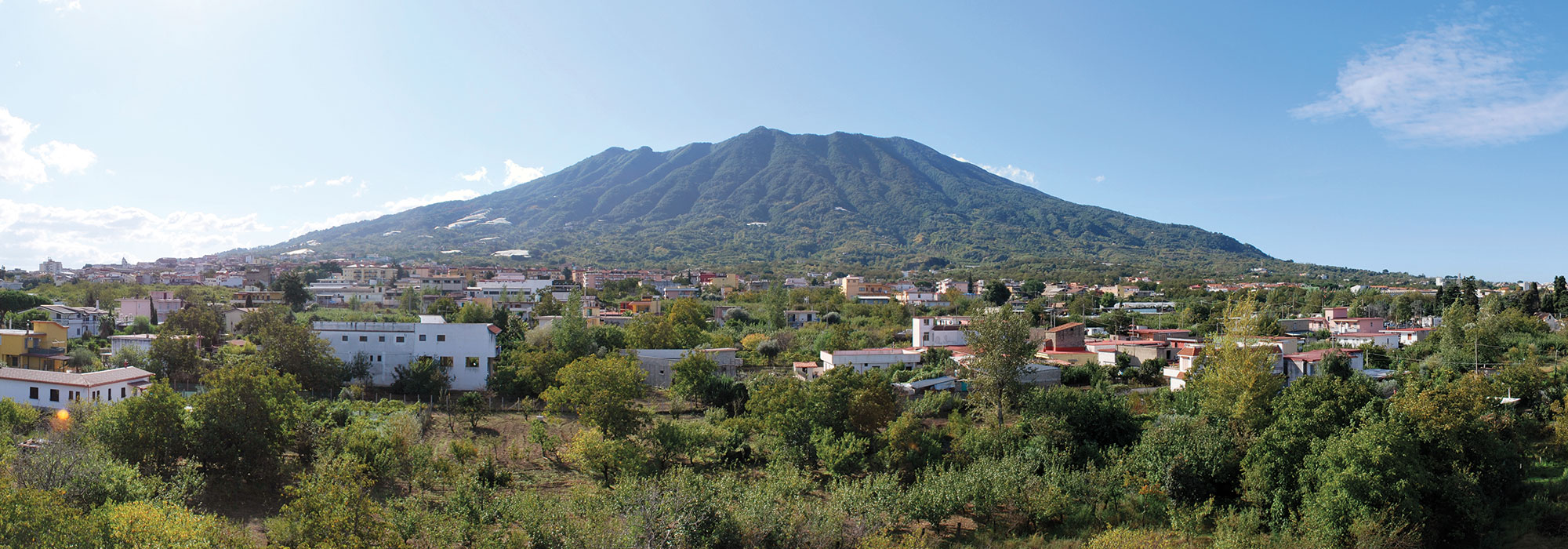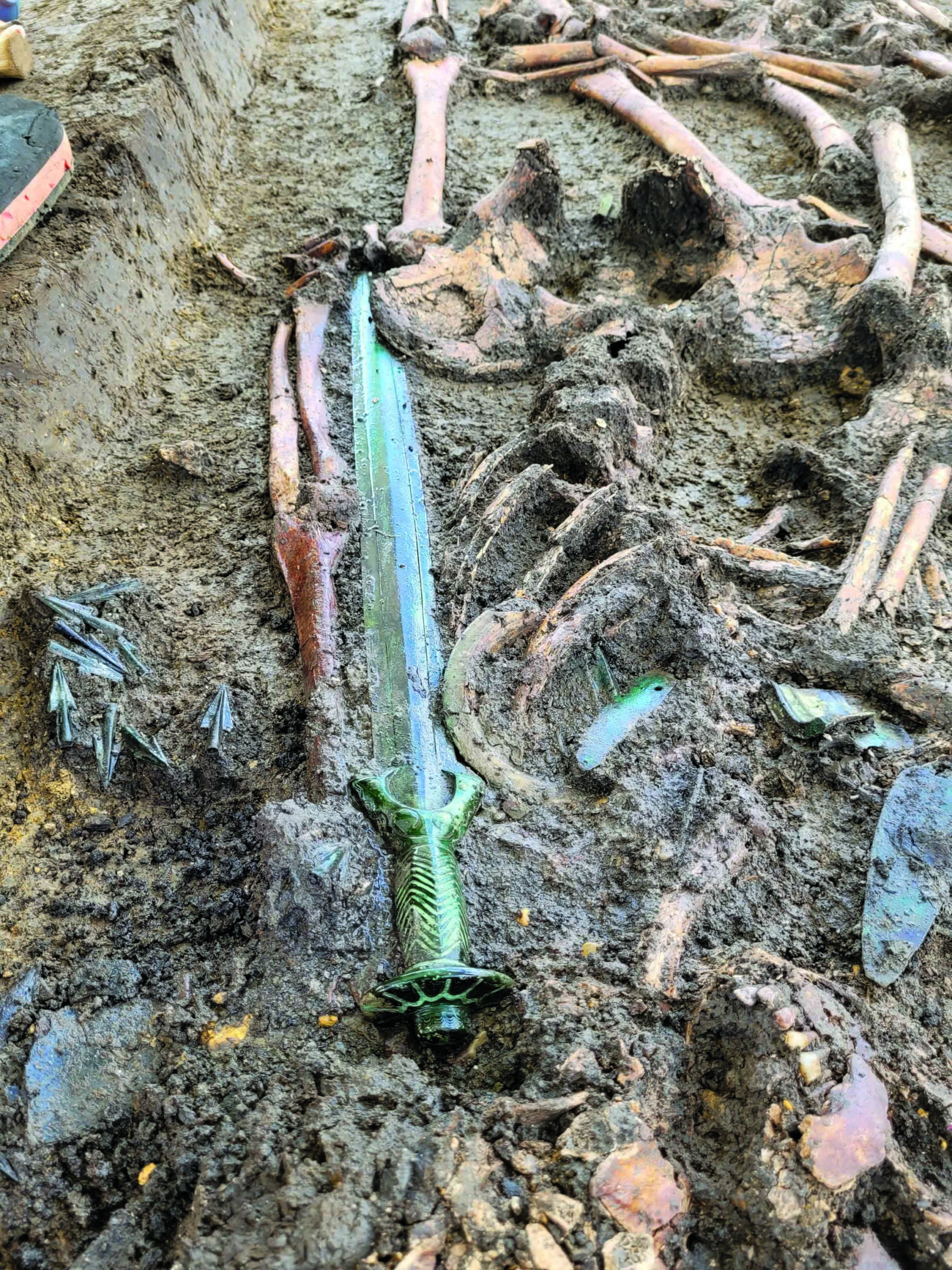
A zigzag pattern, now tinged with the green-blue patina of oxidized metal, adorns the octagonal hilt of a rare sword dating to the Middle Bronze Age in Germany (1600–1200 B.C.) that was recently excavated in the Bavarian town of Nördlingen. Archaeologists discovered the weapon—which is in such pristine condition they say it still glints—alongside the remains of a woman, man, and child and a smattering of artifacts including arrowheads, daggers, and jewelry. Forged entirely of bronze, the 26-inch-long weapon is the work of a skilled swordsmith. Although it weighs approximately two pounds, it is so well balanced that it would have been effective for cutting or slashing, but the lack of wear on the blade and hilt suggests it was never used.
According to archaeologist Johann Friedrich Tolksdorf of the Bavarian State Office for Monument Protection, the sword was crafted using an amalgam of northern and southern regional styles. “The recent discovery doesn’t strictly fit into the existing typology,” says Tolksdorf, “but combines a set of ornamental styles typical of fourteenth-century B.C. octagonal hilts.” Tolksdorf hopes further analysis will help scholars better understand the history of swordcraft in Bavaria and how the deceased individuals were related to each other.


